Several people have asked me to report on how it was getting through airport security with the extra pieces and parts in my body. In general, my experience went well but I think there’s a learning curve and maybe I can help someone else get through your own travel experience a little easier. For me, getting through security was more a question of trying to remember all the extra stuff I now have and the extra steps I had to take in order to get me and my stuff through the scanner and x-ray belt. It was a little overwhelming at times but I took it step by step and it all worked out.
In addition to my 36L backpack and the small laptop bag that I normally carry, here’s a quick look at the “extra stuff” I had that was different this time:
- two metal plates, 13 screws and a pin in my right wrist
- a protective brace/splint over the wrist
- an implanted electronic heart monitor in my left chest area
- a small electronic device (kind of like a tiny remote) carried in my pocket for use in case my heart has an “event”
- an electronic “base station” and hand-held device for the heart monitor (it transmits the heart monitor’s stored information to the cardiologist every night while I sleep)
- an ID card that indicates I have the heart monitor implant, along with the doctor’s name and implant model number
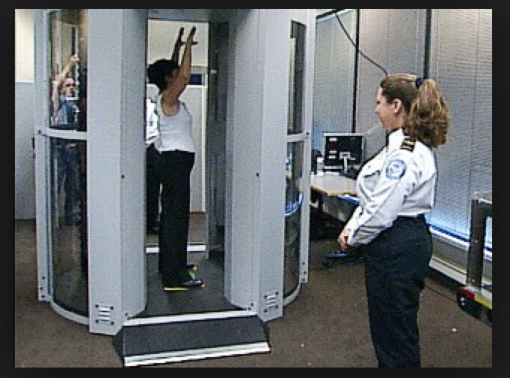
I wasn’t aware that the walk-through metal detector security machines that I’m familiar with are no longer being used at Portland International Airport (PDX) until I asked for a “pat-down” and/or wand because of the implanted heart monitor. The new machines are full-body scanners called Millimeter Wave AIT scanners and this technology apparently doesn’t affect things like pace makers and implanted monitors so they are safe for people with those devices to pass through. However, according to this TSA blog, passengers who have a personal medical electronic device should not be screened by a metal detector and should instead request to be screened by an alternate method. (Note: according to TSA, no identifying characteristics of the person being scanned are shown. Instead, a generic outline of a person is used.)
So here we go:
After passing the desk where they checked my boarding pass and personal identification, I was directed to the only open lane where I took off my shoes and jacket and placed them in a bin which I then put on the belt, right behind my backpack. I took out my laptop and the heart monitor base station and handheld device and placed them in another bin along with my cell phone and the laptop bag. I walked into the scanner, put my feet on the “feet markers” on the floor, and raised my hands over my head. In my left hand I carried my personal identification (which is my passport), the heart monitor identification card, and the small remote I carry in case of a heart “event.” On my right wrist was my splint and the cloth wrist “sock.”
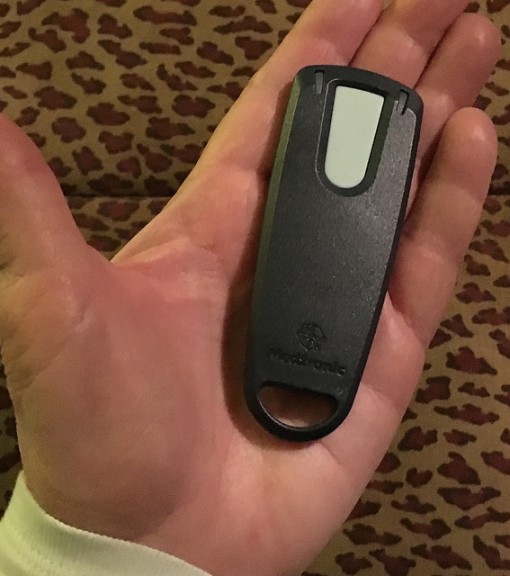
Going through the security line, in front of me, was a woman passenger who was having trouble getting all the metal out of her pockets and off her person (the agent kept finding something else with the wand and repeatedly kept asking her to remove whatever it was – belt, coins, jewelry, etc.). I was “stacked up” behind her when the agent standing behind me called another agent over to “help out” with me. This “new” agent took me aside after telling me she’d get my bags and asking me which ones were mine. She brought me a chair to sit down on and proceeded to run the little swab thingy over my hands, wrists, and splint. Repeatedly. I told her several times that I’d be happy to take the splint off if it would help her but she said no, and continued to swab and wand my right wrist at least three more times. She eventually agreed to let me remove the splint, after which she swabbed and wanded both the sock and the plastic splint, as well as my wrist, at least twice more. Finally she was satisfied that her security check was complete and I had passed, and she allowed me to put my shoes back on, gather my belongings, and leave the security area. Onward to Southern California I went. (For pics of sun and fun in So. Cal., click here.)
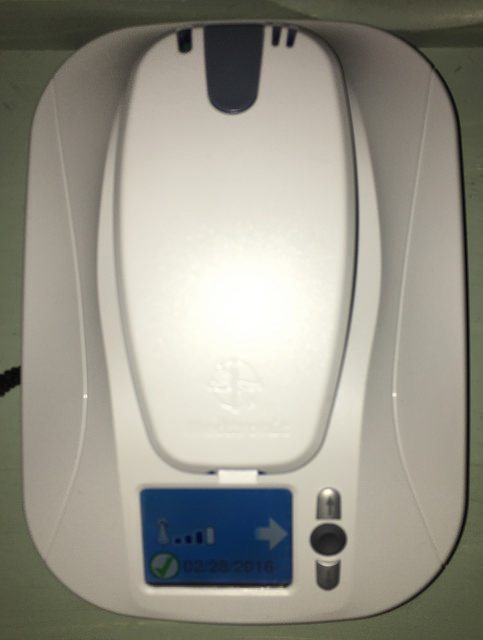
On the return flight, I was given TSA Pre-check status, so I didn’t need to remove my shoes and jacket. I had forgotten to put my phone on the conveyor belt, instead carrying it in my hand, which prompted the agent standing nearby to tell me to return to the belt and place it in one of the small bins. Ontario International Airport (ONT) also uses the walk-into-and-through wave scanners, not metal detectors, and so once again, I placed my feet on the markers and my hands in the air. And once again, after going through the scanner, I was taken aside to be questioned – but this time it was about the contents of my right-hand jeans pocket: a Kleenex and a little plastic bag with my vitamins. Once it was determined that I had nothing metal in my pocket and was allowed to go on through, I went to back to the conveyor belt to pick up my bags; however, the bin with my laptop was nowhere to be seen. I momentarily thought maybe someone else had picked it up by mistake but it turns out I had neglected to pull the laptop out of the bag so it had been taken aside by the agent behind the monitor. The bag also held the base station and hand-held device. She asked me if there was a laptop in the bag; I said yes, and asked if she wanted me to take it out. She replied that no, it wasn’t necessary but that next time, I’d want to take it out of the bag and put it on the belt in a bin. I thanked her and went on to my departure gate. Since I had placed the splint and wrist sock in my backpack, instead of on my wrist, I’d say that overall, the process went a little quicker because no extra attention was paid to my wrist without the splint.
So many things to remember.
Both times through security, I was questioned about the little remote I carried in my hand; calling it a “medical device” as was recommended to me still required a brief explanation of what it was and what it did. Both times I felt like I had too many items and too many things to remember (what item goes where? do I carry this <fill in the blank> with me or put it on the belt? what do I do with the heart monitor ID card? carry it with me? give it to someone?) but both times, I made it through, and both times I learned something new.
So here are my suggestions for flying through airport security with flying colors:
- get to the airport early (if you have “extras” like I do that need to be addressed at security, it’s better to be really early and sitting at the gate waiting for your plane, than be pushed for time and find yourself getting stressed out at security)
- make sure things that are required to be put in a bin on the conveyor belt are readily and easily accessible, not crammed in the bottom of a suitcase, bag or backpack
- make sure the quart-sized Ziplock with the little bottles of liquids and gels is easily pulled out of the luggage if asked for, not in the bottom of the suitcase, bag or backpack (although the airports I flew through did not require these Ziplocks to be placed separately in a bin, other airports do. Follow the signs and/or the TSA agents’ instructions.)
- remove everything from pants and shirt pockets and place in the carry-on well before entering the security area – change, cell phone, wallet, credit cards, etc. Oh, and take that Kleenex out of your pocket, too!
- take your jacket off before entering the security area, maybe draping it over your arm or suitcase to easily and quickly put it on the conveyor belt
- pull-on shoes are easier to get off and put back on than shoes with laces
- take the laptop and other electronic equipment out of their carry bags and put them in a bin by themselves
- if wearing a splint or other similar device that can be removed, put it in the carry-on well before entering the security area
- have ID card(s) in hand, ready in case they are asked for
- don’t try to carry the cell phone in your hand through the scanner; put it in a bin on the belt
- be polite, do what the agents tell you to do, and be polite.
Remember it is always possible to ask for a wheelchair at the airlines’ counter. It won’t get you out of the security check but if you are physically not able to walk, tire out easily, or need extra assistance, it’s good to know that the airlines provide this service. Also, you can ask your airlines for early pre-boarding at your gate. It gives you a little more time to make your way down the ramp or up the ramp, as the case may be, and settled in to your seat before the rush of passengers comes onto the plane. It’s just a little extra something that can help make things go a bit smoother for your flight. And we all know that anything that helps make that happen is a good thing!
I hope this has been helpful to you; it’s certainly a good reminder for myself. Flying and its seemingly ever-changing procedures can be overwhelming. Remember to arrive early, take it one step at a time, and it will all work out. I’m always looking for whatever will make the journey a bit more fun; above all else, don’t forget – it’s all about the adventure!
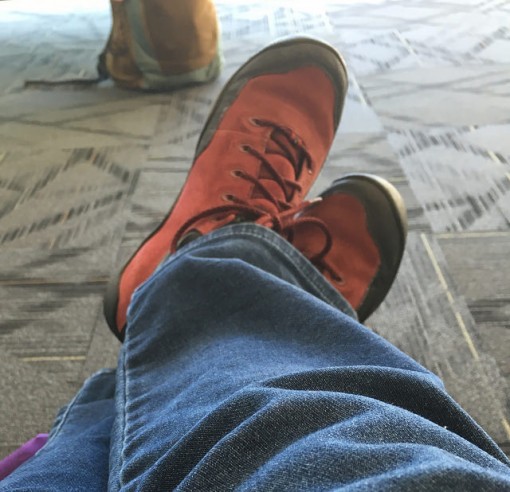

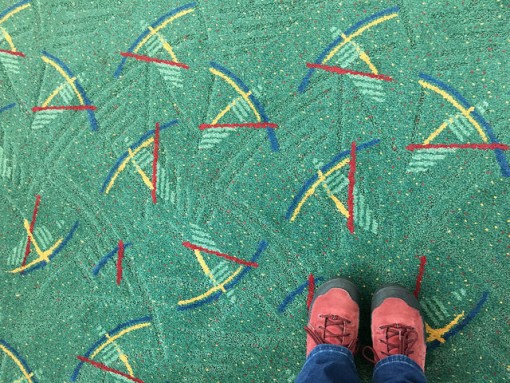


Excellent article Lois! I’m thinking you should submit a copy to the airline along with a thank you for their assistance. Can’t hurt and it could help other passengers in a similar situation. Who knows, they could use it in a newsletter or something.
Thanks, Barbara! Since the article is about security and not the airline specifically, I never thought about submitting it to them. Thank you for the suggestion 😀
Wow very detailed. Humm I think I will drive when I can. Flying is a lot of work. I’m glad you enjoyed your trip.
No kidding, Linda… I love to fly, really love it, but I think I’m getting too old to remember all the new stuff I have to remember. It used to be so easy before all the metal and electronic implants in my body. I did realize something, though – I think everyone who works at the airlines, TSA, flight attendants, etc. are trying to help people out; seems to me they realize how hard it has become, too. I remember flying soon after Sept. 11th – talk about a nightmare! Nobody knew what to do, or how to do it. Security was a flippin’ disaster! At least now it’s become easier in that respect. I’m with you, though – I love to drive, too! Thanks for leaving a comment!
Great info, Lois !
Thanks, Nancy! Thanks for stopping by and reading!